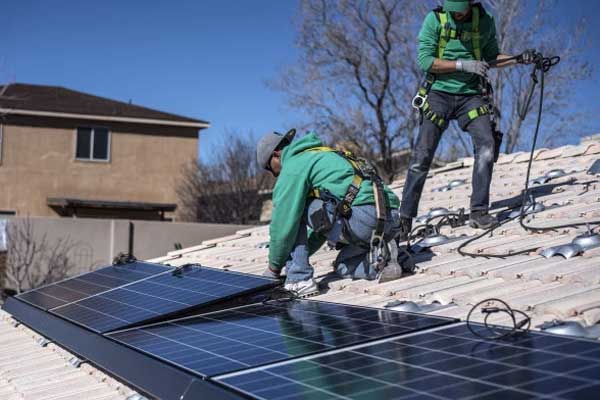- The by-products were manufactured by the company's proprietary GEN2 PUREVAP™ QRR process.
- The company says preliminary results from electrochemical performance tests are promising.
- Adding that the results demonstrate a capacity 3-4 times greater than graphite for li-ion batteries.
Quebec — Innovative silicon solutions provider HPQ Silicon Resources Inc. (“HPQ” or the “Company”) TSX-V: HPQ; FWB: UGE; Other OTC: URAGF; is pleased to inform shareholders that promising results from electrochemical performance tests made with silicon-based by-products manufactured by the GEN2 PUREVAP™ Quartz Reduction Reactor (“QRR”) motivated the company to file a provisional patent application regarding their manufacturing, assembly and usage as anode materials for Lithium-ion batteries.
The patent application follows the completion of a series of tests made on the material produced by the GEN2 PUREVAP™ QRR at the Centre Énergie Matériaux Télécommunications (EMT) of the INRS by Professor Lionel ROUÉ under an NSERC Engage Grant and a NSERC Engage plus Grant.
PUREVAP™ QRR SILICON BY-PRODUCTS: A SUPERIOR ANODE MATERIAL THAN GRAPHITE
Although preliminary, the results obtained are more than promising since the silicon-based by-product made with the Gen2 PUREVAP™ QRR maintained a gravimetric capacity ≥ 1,200 mAh/g for more than 100 charge/discharge cycles, a capacity 3-4 times greater than that of graphite currently used in commercial Li-ion batteries. This material is also promising in terms of high-speed performance. (See Figure 1 below)
Figure 1. (a) Comparing the electrode performance of HPQ Gen2 PUREVAP™ by-product versus graphite electrodes during cycling tests and (b) power response versus electrodes made with comparable silicon (Si).
“This is another demonstration of our multi-prong approach to becoming a key silicon-based material provider for the battery industry and beyond. The unique capabilities of the PUREVAP™ Nano Silicium Reactor (Si) (“NSiR”) will enable us to fully exploit the potential of the Silicon and its by-products manufactured by the PUREVAP™ Quartz Reduction Reactor (“RRQ”),” said Bernard Tourillon, President and CEO HPQ Silicon. “Silicon’s potential to meet energy storage demand is undeniable, generating massive investments, and serious industry interest. We are very confident that demand for the Silicon materials we will produce, with our low-cost scalable processes, will be high demand by batteries and EV manufacturers in this renewable energy revolution.”
___________________
About HPQ Silicon
HPQ Silicon Resources Inc. (TSX-V: HPQ) is a Canadian Innovative Silicon Solutions Provider.
Silicon (Si), also known as silicon metal, is one of today’s key strategic materials needed for the decarbonization of the economy and the Renewable Energy Revolution (“RER”).
Silicon is the most abundant element in earth’s crust but does not exist in its pure state and must be extracted from quartz (SiO2) in what has historically been a capital and energy-intensive process. HPQ is building a portfolio of silicon-based products using innovative scalable processes. The target objective is to produce high-value speciality Silicon products using technologies that will reduce energy consumption, GHG’s, and carbon footprint.
Working with PyroGenesis Canada Inc. (TSX-V: PYR), a high-tech company that designs, develops, manufactures and commercializes plasma-based processes, HPQ is developing:
a. The PUREVAP™ “Quartz Reduction Reactors” (QRR), an innovative process (patent pending), which will permit the one-step transformation of quartz (SiO2) into high purity silicon (Si) at reduced costs, energy input, and carbon footprint that will propagate its considerable renewable energy potential;
- HPQ believes it will become the lowest cost (Capex and Opex) producer of silicon (Si) and high purity silicon metal (3N – 4N Si);
b. Through its 100% owned subsidiary HPQ NANO Silicon Powders Inc, the PUREVAP™ Nano Silicon Reactor (NSiR), a new proprietary process that can use different purities of silicon (Si) as feedstock, to make spherical silicon nanopowders and nanowires;
- HPQ believes it can also become the lowest cost manufacturer of spherical Si nanopowders and silicon-based composites needed by manufacturers of next-generation lithium-ion batteries;
- During the coming months, spherical Si nanopowders and nanowires silicon-based composite samples requested by industry participants and research institutions’ will be produced using PUREVAP™ SiNR.
HPQ is also working with industry leader Apollon Solar of France to:
Use their patented process and develop a capability to produce commercially porous silicon (Si) wafers and porous silicon (Si) powders;
- The collaboration will allow HPQ to become the lowest-cost producer of porous silicon wafers for all-solid-state batteries and porous silicon powders for Li-ion batteries;
- Develop the hydrogen generation potential of Silicon nanopowders for usage with the Gennao™ system;
- Commercialize, exclusively in Canada, and non-exclusive in the U.S.A., the Gennao™ H2 system, and the chemical powders required for the hydrolysis production of Hydrogen (“H2”).
This News Release is available on the company’s CEO Verified Discussion Forum, a moderated social media platform that enables civilized discussion and Q&A between Management and Shareholders.













Comments